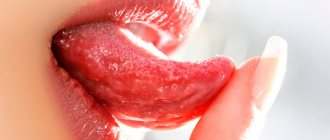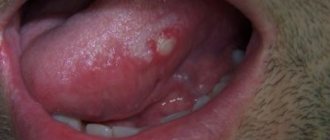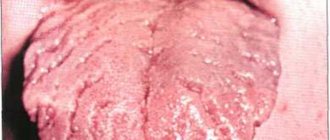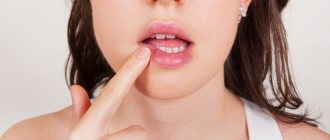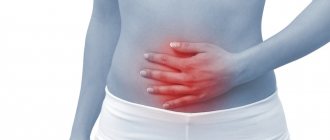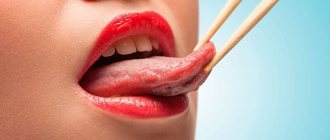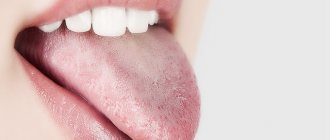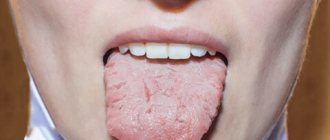“Hairy tongue” is a common and harmless condition that is interpreted as a “coated tongue.” Due to reactive hypertrophy of filiform papillae on the back of the tongue, with chronic irritation (smoking, dry mouth, fever), a villous plexus appears in the form of a partially exfoliated plaque with a changed color. Plaque and food debris stuck in it are a good breeding ground for microorganisms that can provoke the development of villous formations on the tongue, with their color changing from whitish to yellow-brown and black. Find out further on estet-portal.com what reasons contribute to the formation of black villous plaque on the tongue.
Definition
Black hairy tongue, or glossifotia , is a disease with a pronounced change in the structure of the surface of the tongue. Inflammation begins with keratinization of soft tissue cells, which leads to active proliferation and elongation of filiform papillae.
Gradually they take the shape of a hair, increasing in diameter to 2 mm. On average, with their hyperplasia, the length of each papilla can increase to 2 cm or more. During the process of active growth, the surface of the papillae becomes keratinized and changes color from straw to brown or black.
By the shade of the hairs, you can determine the degree of neglect of this pathology. Basically, the affected area is localized in the middle or root part of the tongue.
As a rule, the disease develops slowly and unnoticed. The main symptoms appear only in the active phase of development of the pathology.
Often glossifotia temporarily regresses in the initial stages of its manifestation, which often misleads people into thinking about a complete recovery.
This pathology equally affects both adults and children . The most common cases of the disease occur in older men.
The duration of the pathology is about 2 weeks , but in isolated cases a longer period was observed.
Symptoms
This disease is characterized by certain symptoms that distinguish it from other pathologies affecting the tongue.
These include:
- Sensation of a foreign body on the surface of the tongue.
This symptom can be noticed already at the initial stage of the disease. Visually, a person cannot notice an increase in the papillae, but he feels it, perceiving it as something foreign. As the pathology progresses, the feeling of discomfort intensifies and can provoke a gag reflex. - Lengthening of the papillae and their pigmentation.
- The appearance of a lesion that has clear boundaries . Most often, this area is shaped like a rhombus or an oval.
- The central area of the tongue is covered with a dense gray coating that is difficult to remove under mechanical influence.
- After growth, the patient may be bothered by itching of the palate.
- The pathology is accompanied by a decrease or complete loss of taste sensitivity, as well as dry mucous membranes.
What causes pathology to develop?
The appearance of hair on the surface of the tongue is always a consequence of some phenomena and processes occurring in the patient’s body. In fact, this is a symptom that acts as a complication against the background of a certain pathological disorder in the functioning of internal organs and systems. Most often, the cause of “hairy” tongue is one of the following factors:
- fungal infection, such as stomatitis,
- disruptions in metabolic processes,
- problems in the digestive system,
- long-term use of a particular group of medications,
- imbalance of oral microflora.
This is what a fungal infection on the tongue looks like
“I also encountered the same problem at one time. Thank God, I noticed it at the initial stage, when the tongue was just beginning to become covered with something like stubble. I was, of course, stunned. I immediately went to my dentist, he cleaned me, healed caries in one tooth, and prescribed applications to the tongue. Judging by the tests, the whole problem is due to the course of antibiotics that I took shortly before. Now everything seems to have passed, but I was in a very early stage, I don’t know if this can be treated in advanced cases...”
Kir!85, Ekaterinburg, from correspondence on the forum www.32top.ru
A “hairy” tongue is a phenomenon that requires a professional approach to treatment. Therefore, you should not make independent attempts to cleanse the organ, since in this case the situation can only get worse. It’s better not to take risks and entrust the solution to the problem to professionals.
Causes
Research has shown that a hairy tongue is not an independent disease. This anomaly acts as a complication in pathological disorders of any body system.
Basically, black tongue occurs for the following reasons:
- fungal infections , for example, after fungal stomatitis;
- disorders of the body's metabolic processes ;
- gastrointestinal diseases . The pathology is especially common in chronic gastritis;
- taking medications can also provoke hyperplasia of the tongue papillae;
- violation of the microflora of the oral cavity , which leads to a decrease in protective functions.
What cracks in the tongue look like: causes, treatment and photos of pathology.
This section provides expert advice on what to do if your tongue is coated with a brown coating.
Follow the link https://zubovv.ru/lechenie/yazyik-l/vse-prichinyi-zheltogo-naleta.html for a description of how a yellow coating on the tongue manifests itself, as well as the causes and treatment.
“Hairy” tongue – what does it mean, how does the pathology manifest itself and how to treat it
Dental problems can affect not only the teeth and gums, but also other elements of the oral cavity, and the tongue is no exception.
Some pathological processes affect the condition of this particular organ, which is why the patient begins to experience severe discomfort while talking and chewing. In some cases, pain and swelling occur; a dense coating on the surface of the epithelium can become a signal of the presence of an obvious problem. But one of the most frightening phenomena can be considered the appearance of so-called hair on the tongue and its severe darkening. Read further in this article about what it means when they talk about “hair” in the mouth, what the organ looks like with this pathology, why it develops and how to deal with the problem.
Diagnostics
Diagnosing a hairy tongue is not difficult. The pronounced changes occurring on its surface make it possible to carry out diagnostics independently.
But it is worth knowing that there is such a thing as a “ false hairy tongue,” which occurs as a result of the usual pigmentation of its surface.
The reason for this phenomenon is most often a disruption of the intestines, poor oral hygiene, and acute inflammation of the mucous membrane.
In a clinical setting, at a doctor’s appointment, in addition to visual diagnosis, a bacterioscopic examination is used to determine leptotrichia.
What factors provoke it?
The disease was first described back in 1835. However, its etiology has not yet been clarified, and scientists cannot come to a consensus about the causes of this problem.
At the same time, there are a number of factors that can provoke its development. These factors were determined by collecting and systematizing data from clinical analyzes of patients and anamnesis.
Recently, doctors and researchers increasingly share the same point of view. It lies in the assumption of organ sensitization that occurs under the influence of certain factors.
Sensitization is a sharp increase in tissue sensitivity, which provokes the development of an allergic reaction. In this case, it manifests itself exactly like this - specific tissue swelling with subsequent enlargement and keratinization of the papillae.
There are three groups of predisposing factors : trophic and physicochemical, as well as various general diseases.
- Trophic factors are a disruption of metabolic processes normal for the epithelium of the tongue.
- Physico-chemical factors mean the effects of tobacco, alcohol, medicinal and narcotic substances, and a significant change in the acidity of saliva.
Sometimes even the consumption of certain foods can lead to the appearance of this disease. A similar phenomenon was observed mainly in children.
Some researchers assign an important place among predisposing factors to the development of fungi of the genus Candida, since the majority of patients with hairy black tongue are also diagnosed with candidal stomatitis. However, this may be a consequence rather than a cause of the disease.
The occurrence of the disease in question is also very often associated with various disorders of the gastrointestinal tract and liver dysfunction. A fairly large number of patients had chronic colitis and gastritis.
To summarize, we can identify certain factors that can serve as an impetus for the development of hypoplasia and keratinization of the papillae.
- Poor or lack of oral hygiene.
- Smoking.
- Drug use.
- Taking (long-term) antibiotics and some other medications.
- Too little saliva production.
- Dehydration of the body.
- Radiation to the face and neck, for example during chemotherapy.
- Infectious diseases.
- Disorders of the gastrointestinal tract.
- Metabolic disease.
- Too frequent and active rinsing of the mouth with special liquids (balm-rinses), which can affect the change in acidity.
Treatment
A similar anomaly that occurs in the tongue requires professional treatment. To diagnose and prescribe therapy, you must contact a dentist or maxillofacial surgeon.
Since black tongue is not an independent pathology, for its treatment it is often necessary to turn to other specialists: a gastroenterologist, a therapist.
Treatment by a doctor
Treatment begins with a mandatory procedure of professional cleaning and sanitation of the oral cavity.
After this, the dentist carries out restorative therapy aimed at relieving inflammation and tissue regeneration. Most often, the following methods are used for this:
- Applique. Applications with a keratolytic agent are applied to the black area. It has a gentle effect on the affected tissue, improving metabolic processes. This technique does not damage the mucous membrane, but has a very short effect.
- Injection. In this case, the patient is given an injection of 2% novocaine in combination with calcium chloride into the lesion. This procedure is carried out 2 times a week. The injection method is considered the most effective and non-traumatic.
- Cryodestruction. The principle of this procedure is to irrigate the affected area with liquid nitrogen, which causes the elongated papillae to die. Cryodestruction allows you to quickly eliminate the symptoms of pathology, but it is not carried out in all clinics.
In combination with these techniques, the patient is prescribed drug therapy.
In addition to treatment in the dental office, additional therapy may be required to eliminate the underlying cause of the anomaly.
Medicines
When treating black tongue, a whole range of medications with various effects is prescribed. Most often, the treatment regimen is divided into general therapy and local therapy.
General includes the following tools:
- sedatives : motherwort, valerian. In isolated cases, the use of tranquilizers is allowed;
- Pantothenate Ca. It is recommended to take 1 tablet 3 times a day;
- multivitamin complexes : Oligovit, Unicap, Glutamevit;
- against the background of a general acute condition, antihistamines : suprastin, tavegil, fenkarol;
- if the lesion was caused by a fungal infection, antifungal agents : nystatin, levorin, decamine.
as local therapy:
- solution 5%. They lubricate the affected surface 3 times a day;
- applications with Unna ointment or an oil solution of vitamin A. The application is applied for 15 minutes, 4 times a day;
- It is recommended to use anti-inflammatory and regenerating creams or gels , for example, cholisal, solcoseryl.
Also, in addition to these prescriptions, at home you can use rosehip or sea buckthorn oil, which have a keratoplastic effect.
10% salicylic alcohol, which is used to treat the tongue 2 times a day, has proven itself to be quite good in this regard.
Folk remedies
Many people use folk remedies to eliminate symptoms. Among the various methods, the following are distinguished:
- rinsing the mouth with a solution based on a mixture of medicinal plants : celandine, oak bark, sage. Celandine promotes the death of elongated papillae, oak bark stops the inflammatory process, and sage actively fights microbes;
- to remove the affected papillae, the tongue is cleaned with a brush with a special mixture prepared from three parts: soda, salt and tooth powder ;
- The cauterization method, for which medical alcohol ;
- You can improve tissue trophism and speed up the regeneration process by using paste application The mixture should be applied several times a day for 15 minutes.
Who has a white coating on the tongue and why, what is it connected with?
What to do if red spots appear on your tongue, the answer is in this article.
Which medication treatment for tongue glossitis is most effective is described https://zubovv.ru/lechenie/yazyik-l/tipun-glossit-foto-simptomov.html here.
Consequences
Failure to treat this pathology can lead to complications that affect the overall condition of the oral cavity.
Negative consequences include:
- periodontal inflammation;
- extensive caries lesions;
- partial loss of sensitivity of the tongue;
- changes in microflora;
- decreased saliva production;
- drying out of the mucous membrane.
In addition to local consequences, the disease can also negatively affect the general systems of the body, since overgrown papillae contribute to the accumulation of pathogenic bacteria. Spreading throughout the body, they can cause:
- inflammation of the ENT organs . With a constant attack of bacteria, the immune defense weakens, and, as a result, inflammation begins in them. Most often, tonsillitis, tonsillitis, and sinusitis occur as complications;
- dysfunction of the stomach and intestines , characterized by exacerbation or occurrence of gastritis and stool disorders;
- pathology of the respiratory system . Bacteria entering the respiratory tract can cause bronchitis and even pneumonia.
Prevention
To avoid such a pathology, it is necessary to adhere to some preventive measures:
- The most primary preventative action is to clean the tongue daily with a brush or a special dental scraper. This procedure must be repeated at least 2 times a day;
- In addition to standard cleaning, it is necessary to use rinses . It would be best to use complex rinses aimed at removing bacteria and relieving inflammatory manifestations. It is worth noting that rinse aids must be changed at least once every 2 months;
- do not forget about regular visits to the dentist at least once every 6 months;
- You should always monitor your general condition and if inflammation occurs, do not delay its treatment.
- It is additionally recommended to use an ultrasonic brush or irrigator for cleansing . These devices are capable of flushing out bacteria from micropores of any surface.
Despite the fact that black hairy tongue is not an independent pathology, it still negatively affects local organs and the entire body.
To prevent complications from occurring, it is necessary to contact specialists in a timely manner.
In conclusion, we recommend watching an educational video about diseases of which a coated tongue is a symptom:
If you find an error, please select a piece of text and press Ctrl+Enter.
Tags tongue diseases tongue plaque tongue
Did you like the article? stay tuned
Preventive measures
To minimize the likelihood of coming face to face with such an unpleasant problem, it is important to ensure competent and high-quality prevention. To do this, experts in the field of hygiene and dentistry strongly recommend adhering to the following rules:
- daily brushing of the tongue: twice a day you need to brush not only your teeth, but also your tongue, because no less bacteria accumulate on it than on the surface of the enamel. To do this, you can use the rear ribbed surface of the brush, if it has one, or, for example, purchase a special device in the form of a tongue scraper,
Cleaning your tongue daily will help avoid the problem. - use of rinses: an excellent option can be a pharmaceutical product that not only fights bacteria, but also helps reduce inflammatory processes, helps remove food debris not only from the surface of the organ, but also under the tongue,
- systematic visits to the dentist: it is advisable to undergo preventive examinations at least once every six months. Regular visits to the dentist’s office will allow you to quickly detect the problem in its very beginning, and therefore quickly eliminate it,
- floss and irrigator: to maintain general oral hygiene, do not forget about such important devices as dental floss and irrigator - a portable device that removes plaque and dental deposits through a jet of water and air supplied under high pressure.
Any dental problem can be solved if you respond in time to suspicious changes in the condition of the teeth and oral cavity. The appearance of any neoplasms on the mucous membrane, the occurrence of pain and the formation of plaque on the tongue - all this is a serious cause for concern and an obvious signal that you need to see a doctor.
- Borovsky E.V. Therapeutic dentistry, 2003.
